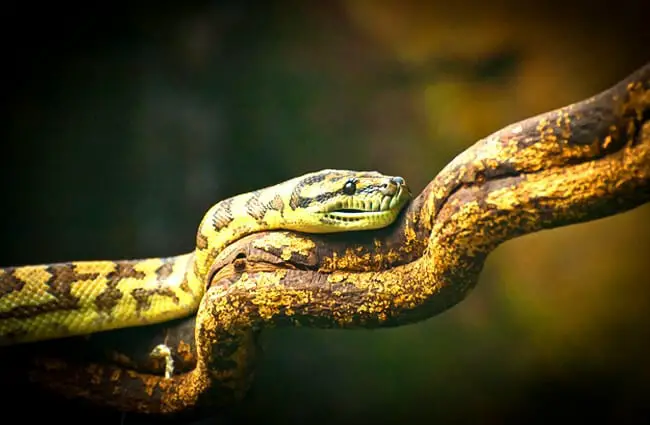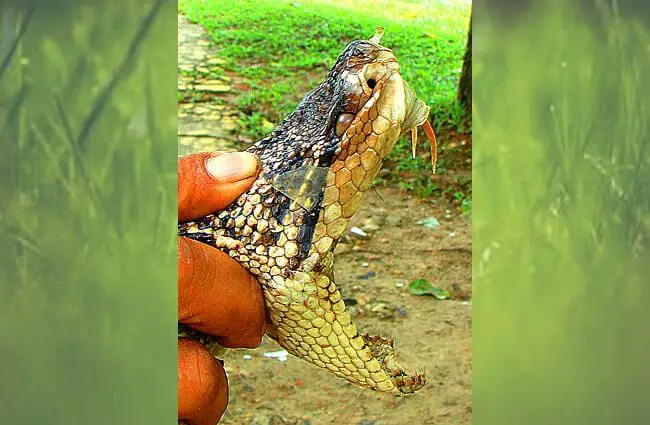The Magnificent Bushmaster: A Deep Dive into the World’s Largest Pit Viper
The Bushmaster, Lachesis muta, commands respect—and a healthy dose of caution—as the largest venomous snake in the Americas and the longest pit viper globally. This imposing reptile isn’t just a creature of legend; it’s a vital component of the neotropical ecosystems it inhabits. This comprehensive guide explores the Bushmaster’s biology, behavior, habitat, and its interactions with both the natural world and humankind.

Basic Biology and Physical Characteristics
Bushmasters are characterized by their robust build, reaching lengths of up to 12 feet, although 7 to 10 feet is more common. Their coloration provides excellent camouflage within the rainforest leaf litter; typically they exhibit a pale tan, brown, or grayish background adorned with dark, irregular markings or blotches. Their heads are broad and triangular, clearly wider than their necks, and their eyes possess vertical pupils—a characteristic of nocturnal or crepuscular predators. A key identifying trait is the presence of distinct scales on the top of the head, including the loreal scales that cover the loreal pit.
Venom and its Effects
The venom of the Bushmaster is a potent hemotoxin, meaning it primarily attacks the blood and tissues. While bites are rare due to the snake’s shy disposition, they are considered medically significant. Symptoms can include severe pain, swelling, bruising, bleeding, necrosis, and potentially systemic effects. Prompt medical attention, including antivenom administration, is crucial in cases of envenomation.
Habitat and Distribution
Bushmasters are native to the dense rainforests of Central and South America, ranging from eastern Panama and Colombia south through the Amazon basin to Brazil, Paraguay, and parts of Peru and Bolivia. They prefer undisturbed primary rainforest, particularly areas with abundant leaf litter and fallen logs, but can also be found in secondary forests and swampy areas. They are largely terrestrial snakes, spending most of their time on the forest floor, but are capable climbers, occasionally ascending into low shrubs or trees.

Diet and Hunting Strategies
As ambush predators, Bushmasters patiently lie in wait for their prey. Their diet primarily consists of rodents, opossums, and other small to medium-sized mammals. They also occasionally consume birds and reptiles. Using their heat-sensing pits to detect warm-blooded prey, they strike with remarkable speed and accuracy, injecting their venom to immobilize and subdue their victim. They then constrict the prey, holding it firmly until it succumbs.
Reproduction and Life Cycle
Bushmasters are ovoviviparous, meaning they give birth to live young after the eggs have incubated internally. Mating typically occurs during the dry season. Females can produce litters of up to 60 or more young, although average litter sizes are around 20 to 30. The young are independent from birth and possess a full complement of venom. Bushmasters are slow-growing and long-lived, with some individuals estimated to live for over 25 years.

Ecological Role and Interactions
Bushmasters play a crucial role in regulating populations of their prey species, helping to maintain the balance of the rainforest ecosystem. They are also preyed upon by larger predators such as jaguars, eagles, and other large snakes. Their presence is often an indicator of a healthy and intact rainforest environment.
Bushmasters and Humans
Due to habitat loss and fragmentation, Bushmaster populations are declining in many areas. They are also sometimes killed out of fear or for traditional medicinal purposes. While attacks on humans are rare, they do occur, particularly when the snake is disturbed or feels threatened. It is crucial to exercise caution and respect when venturing into Bushmaster habitat.
Encountering a Bushmaster: What to Do
If you encounter a Bushmaster, the most important thing is to remain calm and avoid sudden movements. Slowly back away, giving the snake plenty of space. Do not attempt to handle or provoke it. Report the sighting to local authorities or wildlife officials.

Advanced Insights for Aspiring Zoologists and Zookeepers
Evolutionary History
The evolutionary origins of the Bushmaster can be traced back to the Cenozoic Era, with its ancestors likely evolving from primitive pit vipers. Its large size and potent venom are thought to have evolved in response to the abundant prey and competitive pressures within the rainforest environment. Genetic studies are ongoing to further refine our understanding of its evolutionary relationships.
Captive Care Considerations
Caring for Bushmasters in captivity requires specialized knowledge and facilities. They need a large, secure enclosure that mimics their natural rainforest habitat, with appropriate temperature, humidity, and substrate. Their diet should consist of appropriately sized mammals, and their health should be closely monitored by a veterinarian experienced in reptile care. It is crucial to prioritize their welfare and provide enrichment to stimulate their natural behaviors. Avoid direct handling unless absolutely necessary for medical procedures.
![Surprised Bushmaster, coiled to strike Photo by: Christopher Murray [Public domain]](https://animals.net/wp-content/uploads/2019/10/Bushmaster-5-650x425.jpg)
Fascinating Bushmaster Facts
- Bushmasters are among the longest venomous snakes in the Americas.
- They are nocturnal and spend much of their time concealed in leaf litter.
- Their venom is a potent hemotoxin that can cause severe tissue damage.
- Females can produce large litters of live young.
- Bushmasters play a vital role in regulating prey populations in the rainforest.
- They are listed as Least Concern by the IUCN but still face threats from habitat loss and hunting.
- Bushmasters can detect infrared radiation from warm-blooded prey using their heat-sensing pits.

The Bushmaster, a magnificent and ecologically important creature, deserves our respect and conservation efforts. By understanding its biology, behavior, and ecological role, we can help ensure its survival for generations to come.

![Red Angus Closeup of a beautiful Red Angus cowPhoto by: U.S. Department of Agriculture [pubic domain]https://creativecommons.org/licenses/by/2.0/](https://animals.net/wp-content/uploads/2020/03/Red-Angus-4-238x178.jpg)




![Red Angus Closeup of a beautiful Red Angus cowPhoto by: U.S. Department of Agriculture [pubic domain]https://creativecommons.org/licenses/by/2.0/](https://animals.net/wp-content/uploads/2020/03/Red-Angus-4-100x75.jpg)

